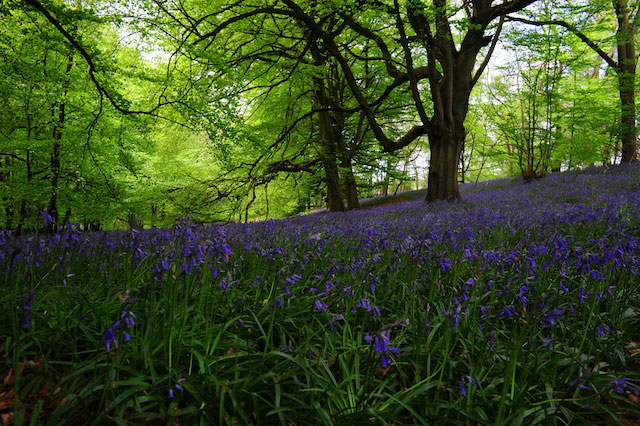Dew-wreathed wind wanderer
Iolaire suil na greine (Eagle with the sunlit eye)

Some more photos of the kite ringing in the Black Poplar. A week later and the chick hasn’t fledged yet. Thanks to Lynne for the photos and update.
It’s been a while since my last post and much to report.
A fine week on Skokholm with the puffins and three weeks now of helping ring Red Kites in the Chilterns, and a lecture on Predators for the Kingston Connections Readers Festival.
Yesterday was special. A nest high in a Black Poplar ( one of the rarest trees in Britain with only 2500 left). A very big chick (around a kilo in weight ), a few days away from fledging. I finally made it up to the nest after gingerly testing all the branches twice because I didn’t like the look of them – I found out when I got down that Black Poplar is notorious for shedding large branches without warning ! As I poked my head over I was faced with a fierce looking chick in a perfect heraldic pose.
They only look fierce and are surprisingly relaxed (!) about being stuffed into a pillowcase and lowered down to the ground for weighing, ringing and measuring and then returned to the nest. This is one of a scant few that was reared successfully in Hertfordshire this year.
The day old chicks
left for bait high
in the nook of beech
are gone.
Become
a wriggle and seethe of maggots
a jay feeding watches me climb.
These endless wheels of flesh
turning.
I’ve spent much of the last few weeks ‘working’ in the trees and what a delight it has been. I’ve had a serious purpose which is to try and get some photos of raptors using infra red Trail Cameras but the real delight has been the aesthetics of it all.
 There is a glade in the beechwoods full of bluebells at the moment where I climb up to the top of one of the trees to sit in the canopy and read. It’s superbly beautiful at present given the season.
There is a glade in the beechwoods full of bluebells at the moment where I climb up to the top of one of the trees to sit in the canopy and read. It’s superbly beautiful at present given the season.
I’m currently baiting here so I’m surrounded by the forlorn corpses of day old chicks which so far are not proving very popular at all. I may unwittingly be reenacting some terrible pagan ritual 90 feet up.
Sit up there long enough in what is my second favourite place in the world to be, doze off, wake up with a start when the ropes pull tight and find you’ve turned into a green man.
This is an exciting new project that I am involved with in the rainforest in the Peruvian Amazon.We are recording all the biodiversity around a tree on a nature reserve over a period of two months. We will be photographing everything from mites up to mammals, which will hopefully include charismatic megafauna such as jaguar, giant otter, and the many primates. I’m responsible for the canopy part of the research, which means accessing the higher levels of the tree. In the rainforest the bulk of the biomass or weight of species is actually above ground, due to the levels of light that reach the forest floor. I will be using climbing techniques; a mixture of arboriculture and industrial rope access to get up to where the biodiversity is thickest. I am currently rehearsing and refining techniques in the Chilterns and in Norfolk, where I am also photographing the wildlife. I’ve always enjoyed climbing trees but getting up really high is a whole new level of experience altogether. Firstly it is extraordinarily beautiful – not perhaps a deep scientific insight but a profoundly aesthetic one. Secondly it is just exhilarating, possibly due to the exertion and the successful avoidance of serious injury.
There is a beech grove where I go to play where the trunks soar clean from the forest floor and where you can walk up the bole into the canopy. Beech is widely viewed as the noblest and most beautiful of trees largely because of the clean lines that the trunks form. There is a popular myth that the arches of the Gothic cathedrals were modelled on the beech. Going further back and into the realm of Robert Graves’s historical grammar of poetic myth, The White Goddess, the beech is imagined as a tree of learning and wisdom.
Here are a few images taken from a recent trip ‘up the glades’.
More details on the project here : www.onetreeinabillion.com
In the last week or so an iruption of Waxwings has arrived in the UK, from Scandanavia, suggesting that we may be in for a hard winter. Large flocks (see below) usually mean that the berry crop in Northeastern Europe has been poor.
I spent a morning yesterday on an industrial estate in Aylesbury, Buckinghamshire, watching a small flock of around twenty, doing their best to devour all the rowan berries. There is currently a flock of around a thousand (!) at the Kyle of Lockalsh, so we may well see some or all of them in the South when they’ve exhausted all the berries.
Here are a few shots taken in rather poor light. I’ll update when I get some better light.
To the deer standing in the road
as I hurtled down the hill
without bike lights
after getting lost.
It could have been bad
for both of us
I finally got round to seeing Timon of Athens last night at the National Theatre with Simon Russell Beale and was struck by the haunting lines that the city-wearied protagonist utters just as he leaves Athens;